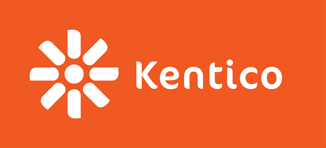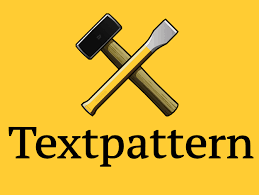CMS is one of the most commonly used terms in the web world standing short for the Content Management System. Working like a charm to the non-technical half of business owners, CMS has saved a good amount of time and money. The learning curve for most of the basic CMS is relaxed. Heading a bit at a time and gradually mastering over time, students and enthusiasts find it useful alike. Unlike website builders taking on the complete task of a business website, CMS helps to truly highlight the content and work in enhancing it to the new technology.
A website is undoubtedly an important aspect of any business. A CMS makes multiple strategies and processes for the smooth use of web content. Both as an Enterprise and Web Content Management Software (ECMS/WCMS), CMS allows us to create, manage, evaluate and manipulate the content that describes the website. Heading towards 2020 there are a lot of new and innovative CMS to get familiar with. Here we have a comprehensive list and more of the best CMS of 2020 alongside some others.
WordPress

WordPress is a widely used CMS powering about a third of total websites around the world. WordPress is an open-source system giving you the freedom to customize almost every aspect of your site. The learning curve to use WordPress is often compared to a word processor i.e., it’s just getting used to a point-and-click interface. These are the pros and cons of WordPress:-
Advantages
– WordPress is popular due to its ease of access and manageability. Users with very little or no knowledge can easily use and operate the website made from WordPress without any complications.
– WordPress has a large and active community. There are new plugins dropping every day and innovative ideas matching the trends come with it.
– It makes navigation easy with specialized menus, add labels and categories and simply more features to the websites
– SEO is more effective with different plugins and add-ons available to manage, analyze and update contents
– Free themes and components make entering in the development segment easier and accessible
Disadvantages
– To modify and remove a certain part of the themes and templates, one must have implementation knowledge of Html, CSS, and PHP.
– Not all plugins benefit your website (There are just tons of it). Some might decrease the efficiency and functionality of the website.
– AS WordPress is dominantly dependent on PHP, the security system is not in par with that of others.
Joomla

Joomla is among the easiest CMS programs one could use and install. Coming with an intuitive dashboard, it provides multiple third-party integrations for setup. Joomla connects your site to different Database Management System (DBMS) for making the content delivery easier. Joomla might even fit more to your business model than WordPress in different scenarios. The learning curve for web developers/designers is not the easiest for Joomla. Here are the pros and cons of Joomla.
Advantages:-
– Easy to download, install and use (Useable almost immediately after the download)
– Free plugins with most suggested immediately after downloading Joomla
– Easy navigation services with less time consuming to maintain pages.
– Provides good administration options with an array of functions to utilize in page setup and maintenance.
Disadvantages
– Adjustments and updates are limited so not ideal for those preferring large no of options
– Advance CMS users don’t suggest Joomla due to problems in large websites.
– It is not the easiest CMS to get into for the beginners
Drupal

Drupal is one of the most complicated CMS using higher programming skills to customize and build new features within it. Drupal is distributed under GNU and is a growing community of professionals. Drupal is often selected by high-end developers after a good experience of WordPress and similar CMS. The Pros and Cons of Drupal are as follows: –
Advantages
– Drupal is Scalable, flexible
– It also provides different graphics modification tools for better page updates.
– It allows creating different formats of the content (text, blogs, pictures, and videos)
– Multiple users can assist in editing and creating the content at the same time
– Wide variety of plugins serving different functionalities can be added and created
– Drupal support is one of the best client-assistance with the answers within your fingertips on the homepage.
Disadvantages
– Installation and modification is harder compared to other CMS
-It’s not best known for being compatibility when developers shift from other platforms due to its improved functions compared to the previous ones.
Kentico

Kentico is a complete CMS made with ASP.Net. It fully integrates all different kinds of features a website has to present namely (Web content management, Online Marketing, E-Commerce, and Intranet) in a single platform. Kentico can be used from small websites to big enterprise-level companies and industries. The pros and cons of Kentico are as follows: –
Advantages: –
– There are diverse features that can be used with little configuration required
– It is more stable than other CMS
– Updates are regular with integrations of new technologies frequent
– GDPR and better data protection
– Easy Azure and Amazon Cloud Support
Disadvantages:-
– Email marketing features are not user-friendly
– No chat support present unlike others
– The learning curve seems easy but not ideal for advance innovations
Concrete 5

Concrete5 is one of the newer CMS which is often classified in the same class as WordPress, Joomla, and Drupal. Written in PHP language, it is known for well-implemented in-context editing making it easy for even beginner level web-authors to make the most of CMS. Its functionality (and add-ons) is distributed through official concrete5. The pros and cons of concrete 5 are as follows:-
Advantages:-
– Provides easy content editing and organizational features (drag and drop content blocks along with template)
– It is easy to use and install generally
– It offers various SEO tools and analytics
– You can give a different level of authorization enabling different access to website data or contents
Disadvantages: –
– The community is growing but smaller than that of others
– Different add-ons must be purchased separately
Textpattern

Textpattern is an open-source CMS based in PHP and MySQL that provides a browser-based interface for your website. As one of the very flexible CMS, it is one of the most admired amongst designers and developers. Textpattern also has a rapidly growing community. Here are some of the Pros and cons of Textpattern.
Advantages
– It provides better information management than other CMS
– Textpattern is a better CMS for programmers
– The plugins provided here are flexible with customizable
– SEO improvement possibilities are vast with better content display mechanisms.
Disadvantages
– No concept of portable themes
– Links and files are poorly developed
– Auto-updates, code highlighting and other perks are less considered for simplicity
Different CMS can elevate different websites to their full potential. Choosing the best one for your website can pave your road to achieve the goal.
